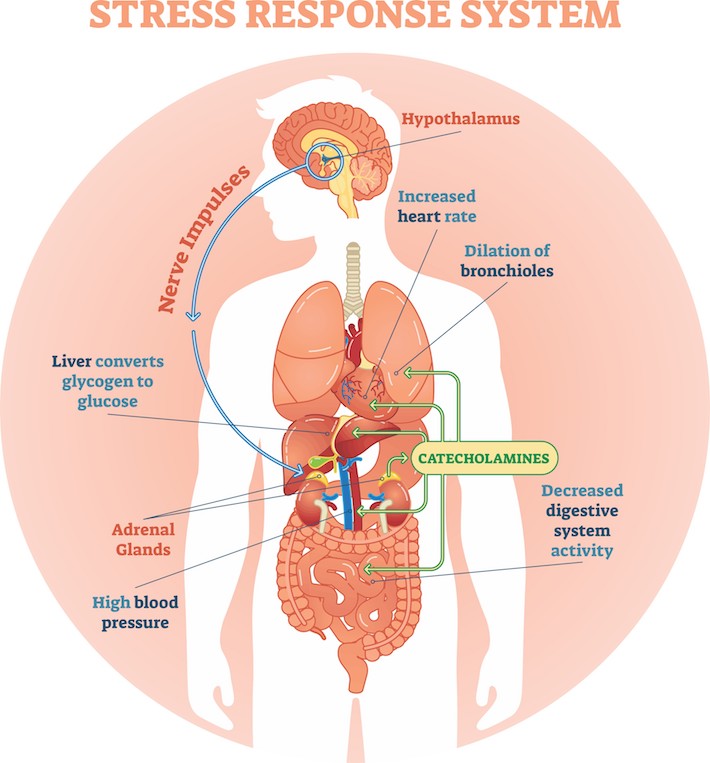Welcome to the Blog of
Dr. Matthew Lewis
Here, you’ll find news from our office, insights and observations from trusted sources in health, information about innovations in the effort to take back your own good health, testimonials from our clients, resources and recommendations of note, and more. Read a post or two and comment on anything that strikes a chord.

Understanding My Personal Approach to Doctoring
As a Tampa doctor trained in functional medicine and integrative healthcare, I take a patient-focused, integrative approach to doctoring. That is, instead of merely diagnosing and treating illness, I focus on restoring health by addressing the root causes of illness, which are unique to each patient. These causes of illness include everything from genetic susceptibilities to environmental toxins and pathogens to diet and exercise and even psychological and emotional states.

This approach to doctoring is standard practice in functional medicine. However, each functional medicine doctor has his or her own approach to doctoring and to managing his or her practice. In this post, I describe my personal approach to doctoring and practice management, so you can:
- Compare my approach to that of other doctors.
- More effectively team up with me to restore your health, if you choose to become one of my patients.
Earning Patients
I do very little marketing to build my practice. Instead, I earn my patients through referrals from several sources:
- Other patients — typically a friend, relative, or colleague I helped with a similar health issue or concern.
- Conventional doctors who are “stuck” with a patient’s health issues and realize a different approach is needed (especially those who have had experience with my methods and witnessed the profound improvement in these most difficult cases).
- Other natural healthcare providers who do not practice functional medicine but understand its value and prefer an approach that helps their clients avoid the automatic application of pharmaceuticals or invasive medical tests and treatments.
- Personal trainers or nutritional or health coaches whose client are frustrated because they have plateaued.
I am not the only provider in functional medicine who can attest to how well patients perform when they have a different option and more time and attention during office visits. Unfortunately, in the current healthcare system, too much is
Back to School: Kicking the Antibiotic Habit
Year after year, parents, mostly moms, bring their children into my office seeking treatment for chronic ear, sinus, or respiratory infections. Their stories are remarkably similar — they have been bringing their child to their pediatrician or family doctor who has prescribed round after round of antibiotics, rarely, if ever, mentioning a cause for the recurrent infection or suggesting an alternative treatment plan.
In conventional medicine, the traditional thinking is deeply entrenched — the go-to treatment for any suspected infection is an antibiotic.
However, this approach is deeply flawed for several reasons, including the following:
- Antibiotics are effective only for treating bacterial infections. Ear, sinus, and respiratory infections are often viral or fungal infections that antibiotics cannot clear up. Rarely do doctors test to determine the nature of the infection before prescribing an antibiotic.
- Antibiotics kill both harmful and beneficial bacteria. Beneficial bacteria are essential for healthy digestive and immune systems. The antibiotics your child is prescribed may do more harm than good in the long run.
- Infections often occur in places that antibiotics cannot effectively reach or penetrate, such as the
What is Postural Orthostatic Tachycardia Syndrome – or POTS?
While there’s probably only a handful of Philadelphia Eagles fans living here in Tampa, Fla., the team’s 2018 Super Bowl-winning quarterback Nick Foles has certainly been highlighted in the news lately.
That’s because Foles and his wife, Tori, have brought public attention to a private issue within their family. Tori Foles was recently diagnosed with postural orthostatic tachycardia syndrome — better known as POTS — which is an often undetected and underdiagnosed chronic syndrome that causes an increased heartbeat, fatigue, dizziness, and fainting.
POTS patients like Tori Foles frequently find themselves at battle with gravity, which is why this disorder is often referred to as “the fainting disease.” The human heart normally beats 70 to 80 times per minute when we are at rest. That rate climbs another 10 to 15 beats per minute when standing up, then settles back down. But for people with postural orthostatic tachycardia syndrome, the heart rate often increases 30 to 50 beats per minute — or more — leading to the lightheadedness, dizziness and fainting that Tori Foles experienced.
 (Image © Maria Hagsten Michelsen)
(Image © Maria Hagsten Michelsen)
While the plight of those suffering POTS became more visible last month when Tori Foles took her case to news outlets and a CNN audience, many of us in healthcare — especially those of us who practice functional and integrative healthcare — are committed to raising awareness about the disorder, and the misconceptions and frequent poor diagnoses surrounding POTS.
Women and the Misdiagnosis of POTS
Between one and three million Americans suffer from postural orthostatic tachycardia syndrome, and 80 percent of them are young women — particularly those in their early teens — with the condition getting worse through the growing years. Because these women are younger and otherwise appear healthy when the disorder strikes, doctors often dismiss the physical prognosis, choosing instead to explore the
Is Sugar Really That Bad for Me?
One of the more recent studies to highlight the negative health impact of sugar and artificial sweeteners is “The Influence of Sugar and Artificial Sweeteners on Vascular Health during the Onset and Progression of Diabetes,” by Brian Hoffman, Ph.D., an assistant professor in the Department of Biomedical Engineering at the Marquette University and Medical College of Wisconsin in Milwaukee.
In his study, Hoffman points out that high amounts of dietary sugar have been known for some time to contribute to a wide range of systemic health problems, including obesity, diabetes, and cardiovascular disease. He also points out that “it was not until recently that the negative impact of consuming non-caloric artificial sweeteners in the place of sugar had been increasingly recognized as a potential contributor to the dramatic increase in diabetes and obesity, along with the associated complications.”
The fact that artificial sweeteners had been on the market for so many years before being proven to cause serious health problems is, unfortunately, no surprise. Companies are allowed to profit (and withhold information from the public) until their products are proven dangerous. The burden of proof for the safety of their products is rarely placed on the Frankenfood manufactures. Instead, consumers, doctors, and researches carry the burden of proof that a product is unsafe, and then it takes years to decades before the Food and Drug Administration issues a warning or orders the products off the shelves, assuming it ever does.
When I was a kid I, I ate
Putting the Brakes on Your Allostatic Load
To the uninformed, the term allostatic load probably sounds more like a setting on your washing machine than a symptom of stress, but if your doctor suspects allostasis, he or she is telling you that your body may be picking up the tab for your stress-filled life.
Allostatic load is a culmination of all the overtaxed pressures in your life, whether that be work related, the result of relationships, health fears, and even past traumatic events that keep cropping up despite our best efforts.
These issues are bad enough by themselves, but then you toss in a diet that features too much sugar or salt, a caffeine habit that keeps you jittery all day, 24-hour news reports that feature no good news, and what you end up with is allostatic load.
Allostasis is a process that includes the release of stress hormones and neurotransmitters within the body. Each of these stress responses take a toll on your physical condition, which in turn only adds to your allostatic load. The end result of this stress buildup? You become sick.
In recent years, many doctors and health practitioners have suggested diet and exercise as a holistic means of relieving stress. And on the surface, a strict diet can make perfect sense. Where it goes wrong — especially when your allostatic load is at a high level — is the accompanying increase in
Hormone Replacement Therapy – Part II: Knowing What’s Involved
If you enjoyed Part I in our series about hormone replacement therapy (HRT), today’s post will complete the picture, especially with respect to what’s involved in HRT itself.
Hormone replacement therapy involves taking one or more sex hormones — estrogen, progesterone, testosterone. While we use the term “sex hormones,” these hormones are also important for heart, brain, bone, and immune system health and for mental health. Having adequate, balanced hormone levels along with healthy hormone receptors, reduces the risk of cardiovascular disease, diabetes, breast cancer, prostate cancer, and dementia. Optimizing hormones reduces risk factors for many of the chronic conditions that increase with age.
HRT can be delivered via different routes, including oral (pills), injection, topically (creams or patches), or inserted into the skin as tiny pellets. The mode of delivery is determined with your doctor based on your specific needs and preferences. Pellet therapies injected into the skin can be done every three months in your doctor’s office. Pills or creams are administered daily and do not require any
Hormone Replacement Therapy – Part I: The Icing on the Cake
Hormone replacement therapy has gotten a lot of press over the years — both good and bad. It all started in the 1960s, when women in their 40s and 50s were prescribed estrogen to alleviate the symptoms of menopause — hot flashes, night sweats, irritability, and mood swings. Then, studies appeared, showing estrogen promotes growth of the uterine lining, which increases the risk of cancer, so doctors began recommending the addition of progesterone to protect the uterus.
However, instead of providing patients with bioidentical estrogen and progesterone, pharmaceutical companies created a synthetic form of progesterone called progestin (which they could patent) and started combining it with various forms of estrogen — synthetic or derived from animals.
At about this same time (the late 1990s), theories emerged suggesting hormone replacement therapy (HRT) would be helpful for preventing certain age-related diseases in older women, and doctors began prescribing it for women in their 60s and 70s. However, in 2002, a large federal study by the U.S. National Institutes of Health called the Women’s Health Initiative linked the leading HRT medication, Wyeth’s Prempro, with an increased risk of cancer, stroke, and blood clotting. As a result of that study and others, many doctors and women abandoned hormone replacement therapy or now use it only to help alleviate symptoms during menopause.
The truth is that hormone replacement therapy is safe and effective for both men and women, as long as it is done right. Doing it right involves addressing other underlying health issues first and then using bioidentical hormones instead of
14 Signs You Might Be Living with Hypothyroidism
Nearly 5 percent of the nation’s population over the age of 12 suffers from hypothyroidism, with older women more likely than any other age group to experience this condition.
Hypothyroidism occurs when the thyroid gland — located in the front lower part of the neck below the voice box— doesn’t produce enough thyroid hormones to keep up with the needs of the body. Simply put, the thyroid is underactive.
And that becomes a problem, because the thyroid is charged with overseeing the function of your metabolism, which determines how your body uses energy from food. For those suffering an underactive thyroid, body processes can slow down, which upsets the normal balance of chemical reactions to your body.
What are some of the signs? If you have any of the following symptoms, you may be suffering from hypothyroidism:
| Aches and pains | Anxiety |
| Constipation | Depression |
| Dry skin | Elevated cholesterol |
| Fatigue | Hair loss or thinning |
| High or low blood sugar | Memory loss |
| Morning headaches | Restless sleep |
| Swelling of the face or body | Weight gain or difficulty losing weight even with diet and exercise |
These are just the short-term impacts. The long-term impacts are even more serious:
How to Choose a Functional Medicine Doctor in Tampa
Schedule A Personal Consultation with Dr. Matt Lewis Editor’s Note: In this post, we offer suggestions, advice and warnings for anyone who is looking for a doctor in Tampa and in particular, those who are seeking a functional medicine and integrative healthcare provider. We hope this Q&A — featuring the thoughts of Dr. Matthew Lewis — proves to be informative in that search. Dr. Lewis is a Doctor of Chiropractic (D.C.), a Diplomate of the American Clinical Board of Nutrition (DACBN), and a Certified Functional Medical Practitioner (CFMP®).
Q: Aside from a Google search, asking a friend, consulting with your insurer, or driving past a doctor’s office that appears inviting enough to walk inside, what are specific ways people can find a functional medicine doctor in Tampa who fits their needs?
A: Many functional medicine-trained doctors provide a public education service on their websites in the form of blog posts, articles or recordings of webinars. Same with their Facebook pages — assuming they use social media to engage with and educate patients. These can be helpful in offering potential patients more information about the doctor and his or her practice, as well as provide important insights into that doctor’s specific areas of expertise.
 (Photo by Andrew Neel on Unsplash)
(Photo by Andrew Neel on Unsplash)
Q: What questions are fair game for a doctor when trying to determine if he or she will be a good fit?
A: If it were me, there are three areas I’d focus on:
Intermittent Fasting Doesn’t Have to Be a Grueling Experience
Intermittent fasting can produce amazing clinical results — especially if you create a step-by-step plan that is simple to stick to and fits in comfortably with your daily schedule and lifestyle.
In my clinical experience, I have consulted with many patients for whom the prospect of fasting holds the fear of excruciating hunger or near-starvation. I’m here to tell you that intermittent fasting is actually an easy approach to healthy eating that doesn’t require huge changes to your daily routine.
We’ll talk more about that process later on in this post.
What do you plan to achieve?
But first things first. Before I recommend such an approach to eating with any patient, there’s a little










Recent Comments